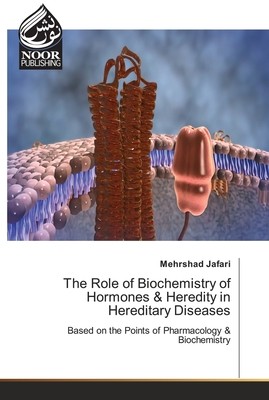
- We will send in 10–14 business days.
- Author: Mehrshad Jafari
- Publisher: Noor Publishing
- ISBN-10: 6205634287
- ISBN-13: 9786205634288
- Format: 15.2 x 22.9 x 0.7 cm, minkšti viršeliai
- Language: English
- SAVE -10% with code: EXTRA
The Role of Biochemistry of Hormones & Heredity in Hereditary Diseases (e-book) (used book) | bookbook.eu
Reviews
Description
To respond to specific stimulation in the body, hormones are secreted and the desired message is sent to the target cell and its connection is done through receptors on the target cell. The receptors of the target cells are proteins and can be membrane or intracellular. In other words, the connection is made in the same membrane or it goes inside the cell. These receptors are three dimensional and act like locks and keys by binding to hormones. After connecting, it executes the command it had in that cell and by performing new reactions, it causes changes in the cells. Hormones either control a specific part of the body or are in charge of general control. According to their type, hormones are transported in the blood free or bound with specific proteins. For example, peptide hormones are transported in a soluble form in plasma, and steroid and thyroid hormones are transferred in connection with plasma proteins. Hormones are inactive when they are attached to these proteins. These hormones are transferred in the blood at a slower rate and remain in the blood for a long time.
EXTRA 10 % discount with code: EXTRA
The promotion ends in 23d.12:25:14
The discount code is valid when purchasing from 10 €. Discounts do not stack.
- Author: Mehrshad Jafari
- Publisher: Noor Publishing
- ISBN-10: 6205634287
- ISBN-13: 9786205634288
- Format: 15.2 x 22.9 x 0.7 cm, minkšti viršeliai
- Language: English English
To respond to specific stimulation in the body, hormones are secreted and the desired message is sent to the target cell and its connection is done through receptors on the target cell. The receptors of the target cells are proteins and can be membrane or intracellular. In other words, the connection is made in the same membrane or it goes inside the cell. These receptors are three dimensional and act like locks and keys by binding to hormones. After connecting, it executes the command it had in that cell and by performing new reactions, it causes changes in the cells. Hormones either control a specific part of the body or are in charge of general control. According to their type, hormones are transported in the blood free or bound with specific proteins. For example, peptide hormones are transported in a soluble form in plasma, and steroid and thyroid hormones are transferred in connection with plasma proteins. Hormones are inactive when they are attached to these proteins. These hormones are transferred in the blood at a slower rate and remain in the blood for a long time.


Reviews